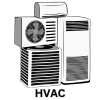Yes — diesel engines for heavy-duty vehicles can certainly be improved in a number of ways to make them more powerful, more efficient, and more environmentally friendly.
Here are some key strategies for improving heavy-duty diesel engines:
In this article:
1️⃣ Turbocharging and Intercooling
✅ Higher Boost Pressure: Turbochargers enable greater air delivery, allowing more complete combustion.
✅ Variable Geometry Turbochargers (VGT): Improve boost across a range of engine speeds.
✅ Charge Air Coolers (Intercoolers): Reduce the temperature of compressed air, increasing its density — yielding greater power and higher combustion efficiency.
2️⃣ Combusting Improvement
✅ High-Pressure Common Rail Injection: Precise control over injection pressure and timing helps achieve complete combustion with less waste.
✅ Multiple Injection Events: Pilot and main injection phases enable fine control over pressure rise and burn rate.
✅ Higher Injection Pressure (up to 2500 bar or greater): Facilitates fine atomization of diesel for faster and more complete combustion.
3️⃣ Air/Fuel Mixture Control
✅ Electronic Engine Control Units (ECU): Monitor and regulate air-fuel ratio for maximum power while minimizing emissions.
✅ Variable Turbomachinery and EGR (Exhaust Gas Recirculation): Help control combustion temperature, reduce NOx, and improve efficiency.
4️⃣ Frictinal Loss Reduction
✅ Low-frictinal Bearings, Coatings, and Lubricants: Reduce resistance within the engine.
✅ Weight Reduction: Lightening components while retaining structural strength can cut down power needed for internal operations.
5️⃣ Heat Recovery
✅ Exhaust Heat Recovery (WHR — Waste Heat Recovery): Capture waste heat with steam or organic Rankine cycle to produce additional power.
✅ Turbo-compounding: Turbomachine converts additional energy from exhaust flow into mechanical power.
6️⃣ Aftertreatment Improvement
✅ Particulate Filters (DPF) and Selective Catalytic Reduction (SCR): Reduce emissions while retaining power output.
✅ Higher Conversion Effficiency: Better catalytic materials enable greater NOx and particulate matter removal with less backpressure.
7️⃣ Material and Structural Innovations
✅ Higher-Strength Alloys: Allow higher compression ratios and greater combustion pressures.
✅ Ceramic Coatings: Provide greater resistance to high temperatures and reduce conductive losses.
8. Emission reduction:
Advanced fuel injection (high-pressure common rail, multiple injection events) to lower soot and NOx simultaneously.
Aftertreatment systems such as selective catalytic reduction (SCR), diesel particulate filters (DPFs), and ammonia slip catalysts.
Exhaust gas recirculation (EGR) improvements to balance NOx reduction with efficiency.
Renewable fuels like biodiesel, HVO (hydrotreated vegetable oil), or synthetic e-diesel to reduce lifecycle CO₂.
Summary
- Diesel engines can be improved significantly in heavy-duty applications.
- Technical innovations enable greater power, higher torque, improved thermal efficiency, reduced emissions, and greater durability.
- The combination of advanced turbocharging, injection technologies, materials, and control strategies helps heavy-duty diesel engines perform more efficiently while complying with increasingly restrictive emissions standards.



